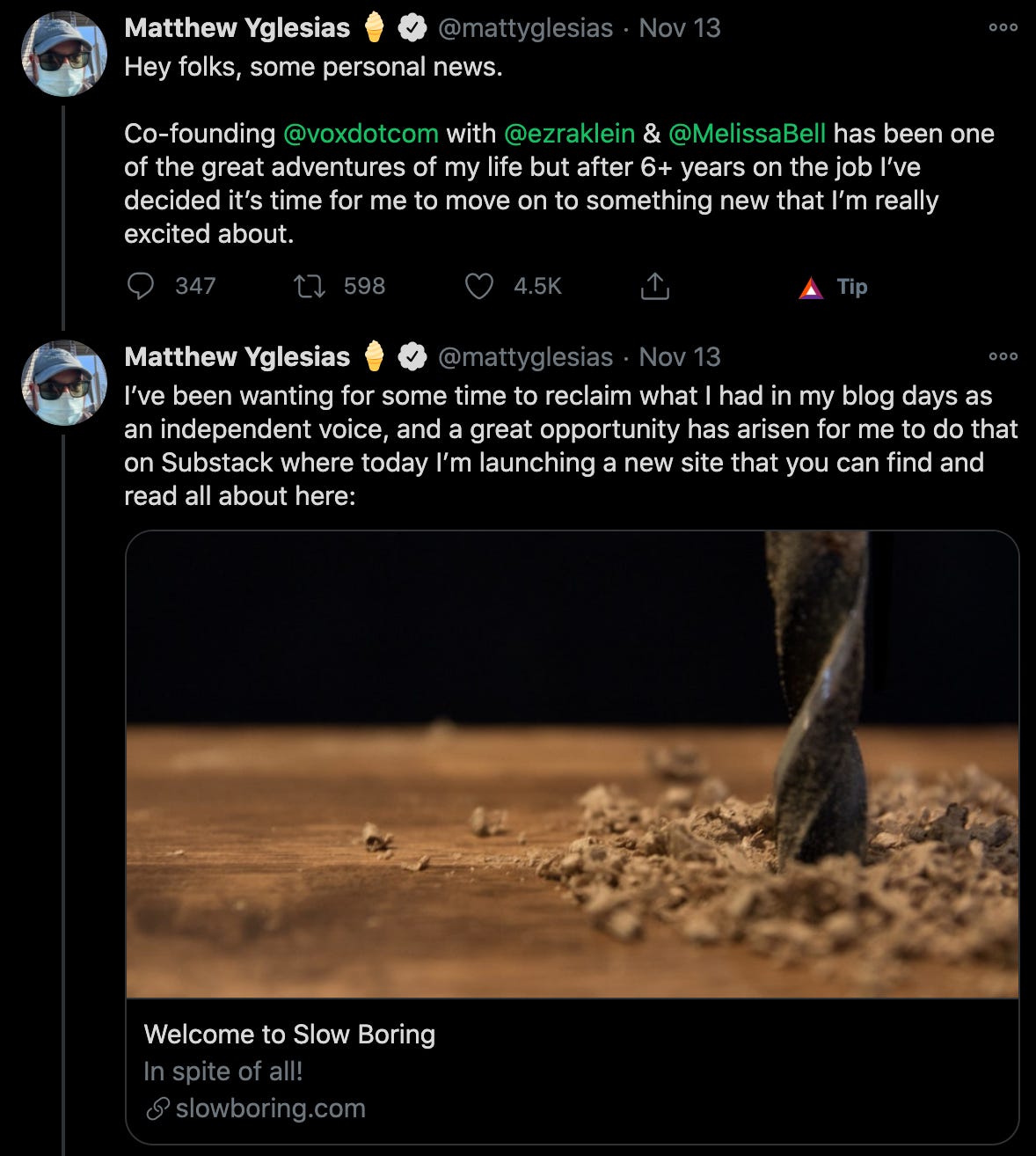In a time when the Murdoch Family owns some of the largest media companies from The Wall Street Journal, Dow Jones, to Fox News, & the Times, we are increasingly seeing an unbundling of news as journalists are leaving big conglomerates to create their own independent media brands.
In today's digital age, the creator will be the brand, not the publisher. And there is some proof to it..
Big names such as Casey Newton (formerly of The New Republic), Emily Atkin (formerly of The New Republic), and even the co-founder of Vox, Matthew Yglesias have left established media houses for the newsletter business where they can create and nurture their own personal brands.
This new subscription route enables the journalists to have greater editorial freedom and entrepreneurial opportunities. Additionally, they end up writing mainly for their fans, resulting in greater engagement and improved feedback loop (thanks to all that sweet data!). Hence, they can better cater content to improve the feed and fans are willing to pay for this quality product!
So what triggered this exodus of talent from established publications to venture out as an independent?
Substack!
Substack is an alternative media economy that aims to give journalists autonomy. By severing the link between ads and journalism, they stop the chasing of clicks, while enabling content creators to instead focus on the quality of their work. Move-over ad supported media!
What’s even more impressive is the kind of $$ being generated by the top dogs on the platform.
Hamish McKenzie, co-founder of Substack, admitted that writers could make a $100,000 a year if they bring in just “a couple thousand people” who spend $5 a month on a subscription.
The math checks out, and journalists seem to love this new dynamic.
This model, however, might not work for everybody, but it sure is a step in the right direction which could be a new media landscape altogether.
Check out our conversation about this very trend in journalism and what we can expect to see in the coming years.




